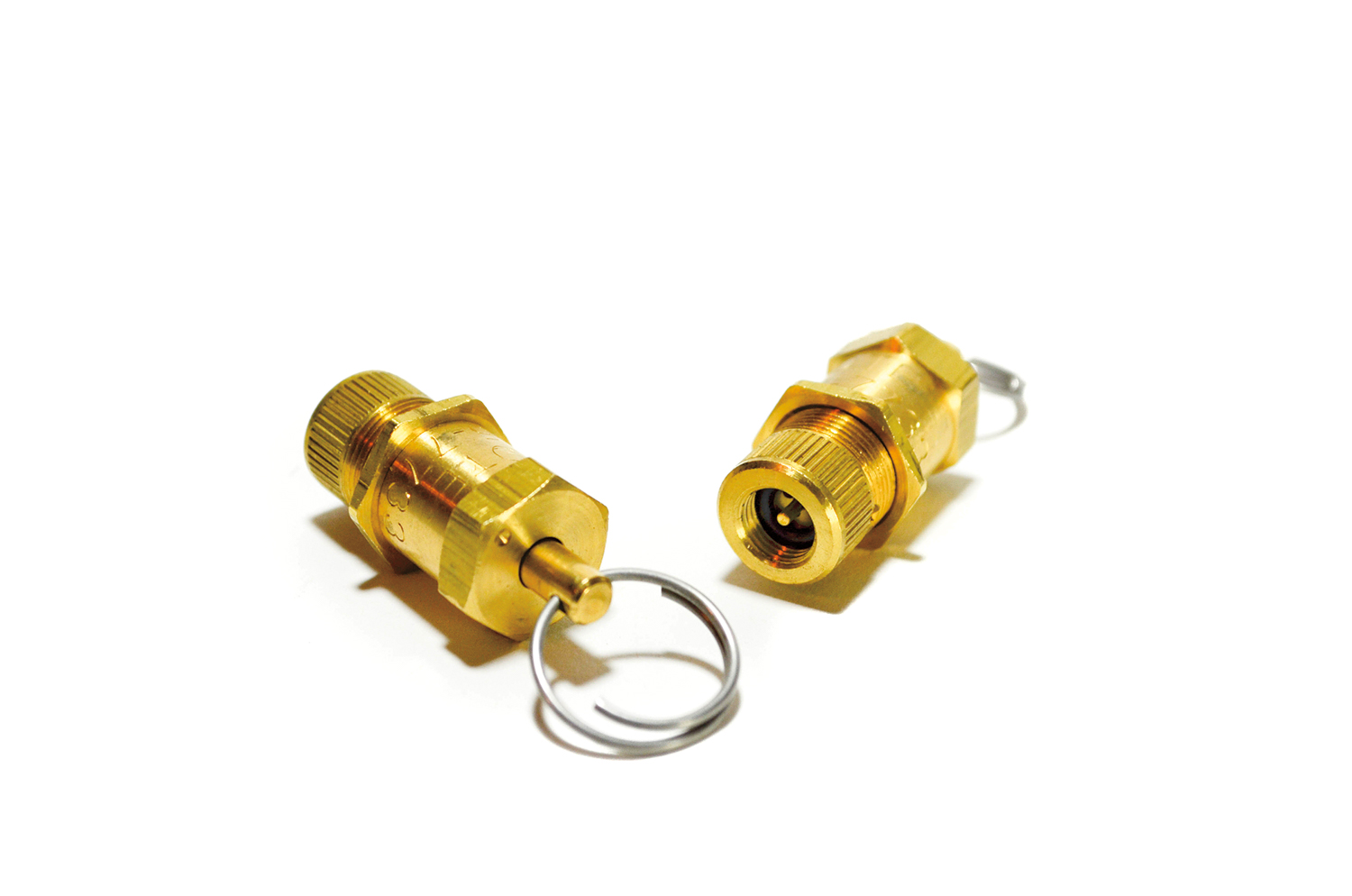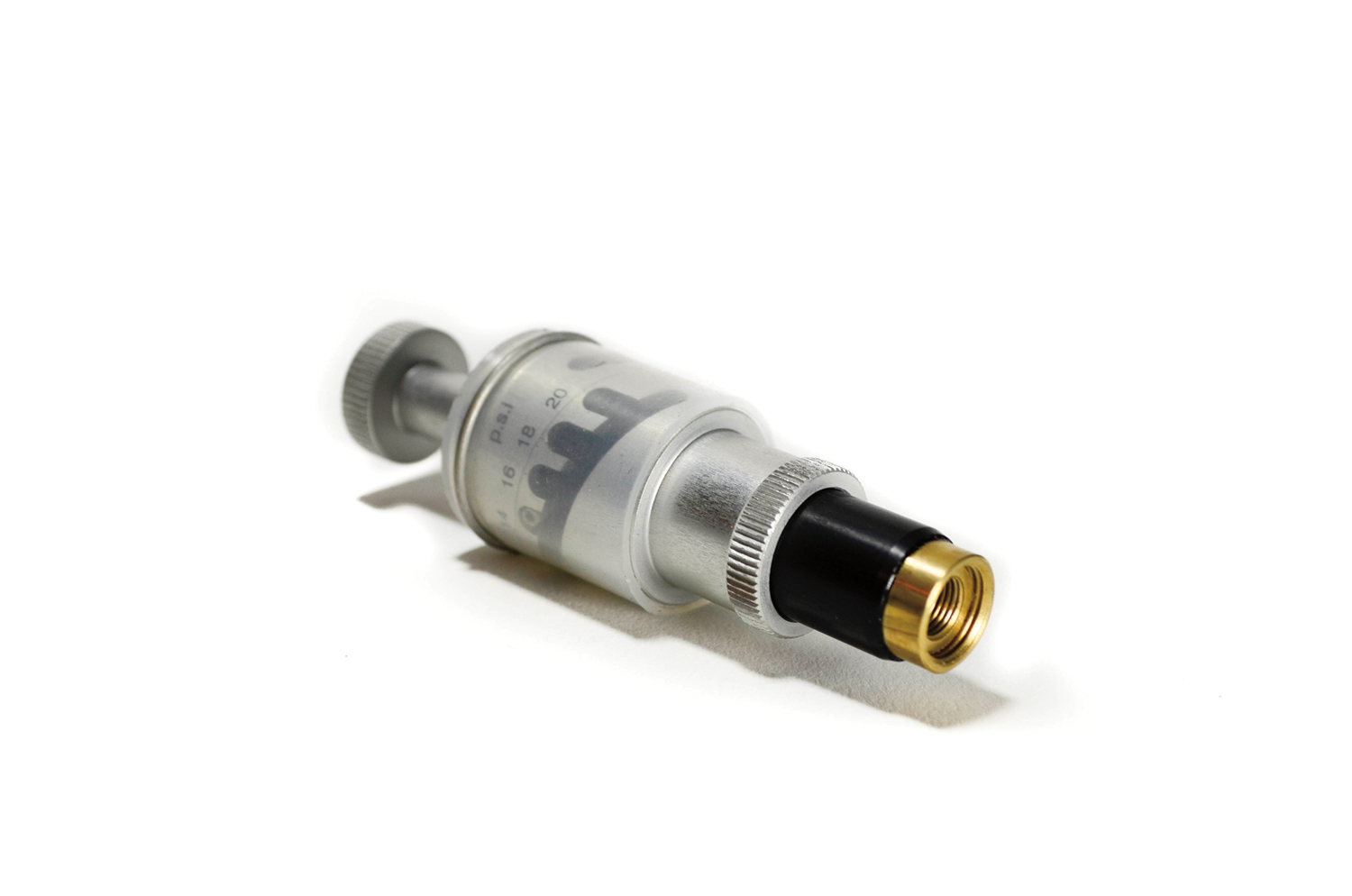Editor’s Note: This article was originally published in Overland Journal, Summer 2017.
There’s no debating the advantages of matching tire pressure to terrain. Decreasing psi is the most effective way to extract that last measure of traction from your tires. Doing so not only increases deformation and flotation, but also improves comfort over rough surfaces such as corrugated dirt tracks and rocky roads. A denture-rattling two-track can become virtually imperceptible with softer sidewalls. These benefits apply equally to sand, snow, dirt, rocks, and mud, with a significant reduction in the likelihood of getting stuck. We tested five tire deflators and weighed in on their various attributes. Ease of use, size, cost, and process of adjustment were all considered.
STAUN
$89/SET OF 4

PROS
Simple setup
Compact
Durable, corrosion-free brass
Damage less likely to incur when dropped (over dial gauge deflators)
Simultaneous deflation
CONS
Longer deflation time than methods that remove a Schrader valve (per tire)
Setup requires a tire pressure gauge
Adjusting to new pressures adds time
Locknuts can loosen
The grand-daddy of tire deflators, the Staun is a simple, compact tool that can be set to a precise pressure, dropped into the included leather pouch, and stowed away in the door panel or glove box of your vehicle until you need it.
Setup is straightforward, requiring a single inflated tire and a trusted pressure gauge to accomplish. Deflate the tire to the desired pressure, back the adjustment cap off of the deflator, and screw it onto the valve stem. Slowly rotate the threaded cap clockwise until air begins to escape, back it off until it stops, and secure it in place with the locking collar. Be certain to give it a test run before calling it quits; repeat this process for the remaining deflators. Note: Our test unit had a fixed destination pressure of 6-30 psi. They can also be purchased in ranges of 1-10, and 5-15 psi.
The locking collars are hand-tightened, which means they could vibrate loose resulting in unwanted adjustment. Setting all four deflators to the same pressure also required some time-consuming micro-adjustments. Deflation is non-linear, occurring quickly at first, slowing significantly as pressure decreases. Despite these minor issues, this product is convenient to use.
STAUNTYREDEFLATORS.COM.AU | COYOTEENTS.COM | 949-645-7733
RUGGED GROUP
PRESSURE PERFECT $375

PROS
Compensates for elevation and ambient temperature
Easy-to-read digital display
Can be wired to a compressor for precise tire inflation
Ease of adjustment
CONS
Power source needed
Must be mounted in vehicle or stored in a case
Requires an additional hose and air chuck to attach to tires
Cost
The Pressure Perfect is in a league of its own. Not only can it precisely compensate for elevation, it can also be connected to a compressor for reinflation. The digital display is powered by connecting the provided battery clamps to a 12-volt power source. The pressure is then easily adjusted via the up and down arrow keys located on the face of the display.
This module is small enough to fit comfortably in the palm of your hand and can be mounted either inside the cab of your vehicle, under the hood, or for ultimate functionality, paired with one of ARB’s portable air compressor kits. The outer shell is comprised of tough ABS plastic with a large, easy-to-read digital display that can be configured for either a black or white background to compensate for high glare.
As a tire deflator alone, the Pressure Perfect is overkill. However, when combined with a 12-volt compressor, it becomes so much more. Introduce a four-way air hose to your kit, and tires can be inflated or deflated simultaneously at the push of a button. This rig certainly wins the high-tech award.
PRESSUREPERFECT.COM.AU | 03-59-822522
COYOTE
$80/SET OF 4

PROS
Most compact of units tested
Durable, corrosion-free brass
Damage less likely to incur when dropped (over dial gauge deflators)
Simultaneous deflation
CONS
Longer deflation time than methods that remove Schrader valve (per tire)
Setup requires a tire pressure gauge
Adjusting to new pressures adds time
A natural progression of an old design, the Coyote aims to improve upon its predecessor, the Staun deflator. Like the Staun, the body and internals are constructed entirely of corrosion-resistant brass. A small internal spring and plunger control the flow of air and tire pressure. The threaded cap adjusts the pressure placed on the internal spring; wind the cap down for higher pressures, unwind for lower pressures.
Unlike its counterpart, the Coyote has a set destination range of 4-56 psi without the need for internal spring changes. The body and collar both feature a hex shape to accept a pair of box wrenches to lock them in place, decreasing the chances of any unwarranted adjustments—this happened occasionally while handling the Staun deflators. The Coyote is also the smallest deflator of the group, easily fitting into a shirt pocket. Screwing the device onto the valve stem will start the flow of air. However, if the tire pressure is already set low, the deflator may not begin on its own. Pulling on the exposed plunger will overcome the spring pressure and allow the tire to begin to deflate. The changes made to the Coyote are subtle yet well-thought-out, making this a much more reliable tool than the Staun.
COYOTEENTS.COM | 949-645-7733
EXTREME OUTBACK
PRODUCTS
MIL-SPEC MULTI CHOICE $100/EACH

PROS
No setup required
Ease of adjustment
CONS
Large size
Aluminum body feels cheap and clumsy
Limited destination pressures
Cost
The form factor of this unit resembles both the Staun and Coyote deflators, but that’s where the similarities end. Instead of a lengthy setup, this unit is ready to use right out of the box. Simply rotate the adjustment knob to the desired pressure rating and screw the device onto a valve stem. The ease of adjustment makes the Extreme Outback Products’ deflator ideal for those who experience a variety of terrains in their travels where multiple pressure changes may be necessary. They are quite large though; one deflator is roughly the size of the four Staun units in their carry pouch.
Per the strict requirements of the military, this multi-choice unit needed to be both rugged and service free. To achieve this, the body is constructed of lightweight aluminum with corrosion-free brass internals. A clear silicone dust boot encases the exterior, protecting moving parts from dust and moisture.
The unit we tested was clearly labeled with a range from 10-20 psi in 2 psi increments. Extreme Outback also offers a Rock Crawler version with a range of 2-12 psi, also in 2 psi increments. This is by far the most intuitive deflator of the group.
EXTREMEOUTBACK.COM | 866-447-7711
ARB E-Z
$42
PROS
Fast
Easy to read gauge
No tools needed
Ease of adjustment
No setup required
Cost
CONS
Only one tire can be deflated at a time
Dropping the dial gauge can result in loss of accuracy
Bulky brass fittings may not fit all wheel types

The E-Z is essentially a tire pressure gauge with a deflation tool installed in place of the standard chuck. Thread the tool onto the valve stem, remove the Schrader valve with the centrally located valve core tool, and you’re in business. Pulling up on the large conical fitting releases air through two large vents, while pressing down on it interrupts airflow and registers pressure on the gauge. Cycling between these two motions is all it takes to set pressure. Once the desired psi is achieved, screw the Schrader valve back into the stem and remove the tool.
The valve core tool can be difficult to key due to the amount of internal play, which was more of a minor annoyance than an issue. The E-Z had the fastest single tire deflation speed of the group, making it a personal favorite.
ARBUSA.COM | 888-427-2872


